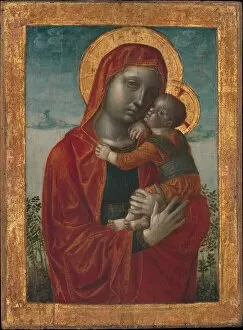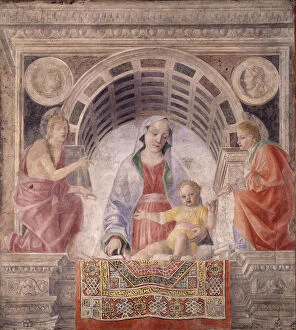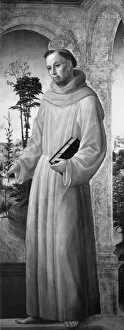Foppa Collection
Vincenzo Foppa, an Italian artist active during the late 15th and early 16th centuries, left behind a remarkable body of work that showcased his talent and skill
All Professionally Made to Order for Quick Shipping
Vincenzo Foppa, an Italian artist active during the late 15th and early 16th centuries, left behind a remarkable body of work that showcased his talent and skill. His paintings captured various subjects, from religious figures to portraits of individuals. One such masterpiece is "Madonna and Child, " created around 1480. In this painting, Foppa depicts the tender bond between the Virgin Mary and baby Jesus. The serene expressions on their faces convey a sense of love and devotion. Another notable artwork by Foppa is "Saints Jerome and Alexander. " This polyptych, dating from 1500-1505, showcases intricate details in its composition. The saints are depicted with great precision, emphasizing their importance within religious iconography. Foppa's versatility as an artist is evident in his portrait titled "Portrait of a Young Lady" from around 1490. With meticulous brushwork, he captures the beauty and elegance of the subject while also revealing her inner character. The Bottigella Altarpiece or "Pala Bottigella, " painted between 1480-1485, exemplifies Foppa's ability to create grandiose compositions for religious settings. This altarpiece features multiple panels depicting scenes from biblical narratives alongside saints' representations. In another depiction of Madonna and Child titled "Madonna and Child with Saints John the Baptist and John the Evangelist" (1485), Foppa portrays not only Mary but also two important figures in Christian tradition. Through careful attention to detail, he brings these holy figures to life on canvas. Foppa's mastery extends beyond religious themes; he also excelled at portraiture. One example is his captivating portrayal of Giovanni Francesco Brivio—a testament to Foppa's ability to capture individuality through paint strokes alone. "The Adoration of the Kings, " created around 1500 by Foppa, showcases his ability to depict grand scenes with multiple figures.












